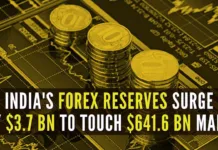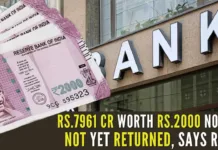
RBI keeps the repo rate unchanged at 6.5%to maintain balance between growth and inflation
Expecting the economy to continue on a high growth trajectory the RBI has raised India’s GDP growth forecast from 7 percent to 7.2 percent for the current financial year (2024-25). However, it has decided to stick to its CPI inflation forecast of 4.5 percent for the year.
RBI Governor Shaktikanta Das said the GDP growth in the first quarter of 2024-25 is likely to be at 7.3 percent, 7.2 percent in Q2, 7.3 percent in Q3, and 7.2 percent in the last quarter.
“The pattern of world crisis continues, but India is headed for sustained high growth based on its demographics, productivity, and the right government policies in place. However, at the same time, we need to be vigilant in the backdrop of an unsettled global environment,” Das said.
The RBI left the key repo rate unchanged at 6.5 percent in its monetary policy review on Friday as it continues to maintain a balance between economic growth and keeping inflation in check.
This is the eighth consecutive time that the RBI has left the interest rate unchanged.
The central bank had last changed rates in February 2023, when the repo rate was hiked to 6.5 percent.
The RBI raised rates by 2.5 percent between May 2022 and February 2023 after which they have been kept on hold to support economic growth despite inflationary pressures in the past.
The repo rate is the interest rate at which the RBI gives short-term loans to banks to enable them to meet their liquidity requirements. This in turn has an impact on the cost of loans that banks extend to corporate entities and consumers.
A cut in interest rate results in more investment and consumption expenditure which spurs economic growth.
However, the increased expenditure also pushes up the inflation rate as the aggregate demand for goods and services goes up.
The country’s annual retail inflation eased to 4.83 percent in April but is still above the RBI’s medium-term target rate of 4 percent. The fact that the economy has clocked a robust growth rate of 8.2 percent for 2023-24 leaves the RBI with headroom to put off an interest rate cut until inflation comes down to its targeted level, according to economists.
For all the latest updates, download PGurus App.










